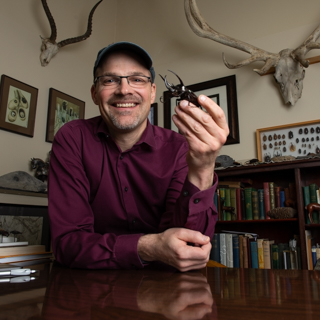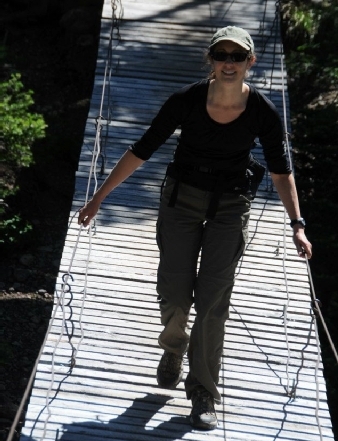Alumni
Lab Alumni
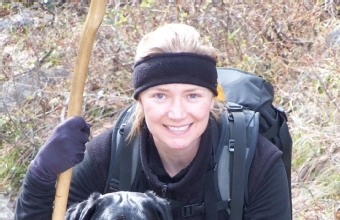
Jennifer Marangelo
Jennifer managed the lab from 1999-2006. In 2009, she founded the Missoula Butterfly House and Insectarium and currently serves as the Executive Director.

Quenna Szafran
After managing the lab and working on the developmental mechanisms of body patterning in dung and rhinoceros beetles, Quenna worked with the Institute for Circumpolar Health Studies and earned a nursing degree from the University of Alaska, Anchorage.
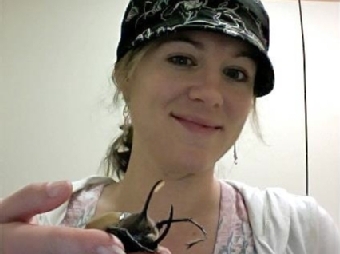
Annika R. Duke
Annika was a lab member from 2006-2012. During that time, she managed projects and the beetle rearing program, and also developed an extensive outreach program to teach kids and community members about the importance of insects in our ecosystems and in our lives.
Ashley King
I received a B.A. in Biology and Psychology from Wake Forest University and a M.S. in Organismal Biology and Ecology in the Emlen lab at the University of Montana. While at the University of Montana, I received funding from a National Science Foundation Graduate Research Fellowship to study the use of weapons in intrasexual competition over females and resources. My study system was the horned beetle Trypoxylus dichotomus, which I used to compare selection on male horns between populations in Taiwan and Japan. Currently, I am the Program Coordinator for StreamTeam, a volunteer-driven watershed restoration program in Vancouver, Washington.
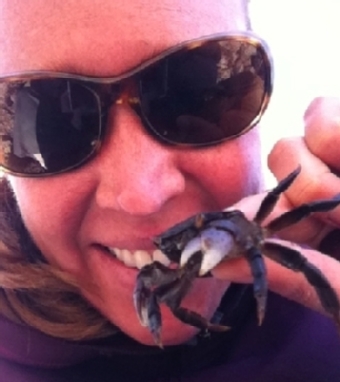
Tara Maginnis
maginnis@up.edu
I worked with Doug from 2000-2006 on the tradeoffs associated with leg regeneration in stick insects. Using a suite of different species, we studied how the investment into a leg for a second time can affect the growth of other structures. Some of the most exciting results were documenting just how common leg regeneration is in the wild (field sites in Australia) and how the tradeoffs associated with regeneration differ based on morphology (lab work with a winged and wingless species). After Montana I went Austin, Texas where I did two post-docs: a teaching post-doc at St. Edward's University and a research post-doc with Molly Cummings at The University of Texas. I'm currently an Assistant Professor at the University of Portland studying critters of the intertidal zone; in addition to working with a plethora of animals capable of appendage loss and regeneration, undergraduates and I ask and answer fun questions in the realms of sexual selection and camouflage.

Erin McCullough
mccullough.e[at]gmail[dot]com
My research explores the evolution and diversification of extreme morphologies. Specifically, I study the horns of giant rhinoceros beetles, which are some of the most elaborate structures found in the animal kingdom. My research encompasses many fields of biology, including evolution, behavioral ecology, physiology, and biomechanics.
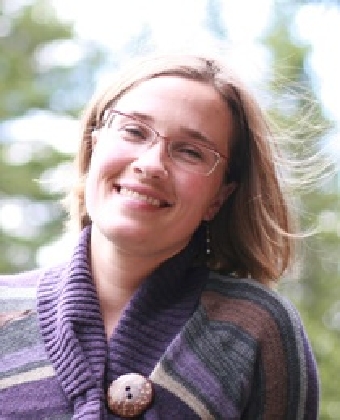
Christine W. Miller
Dr. Christine W. Miller received a B.A. in Biology from Wesleyan University. From there she went on to conduct research in Montana, Georgia, Washington, Central America,and Africa. She received a National Science Foundation Graduate Research Fellowship, Epscor Fellowship, and multiple awards from the Smithsonian Institution for her Ph.D. research at the University of Montana. While at the University of Montana she worked with Dr. Douglas Emlen on environmental effects on sexual selection using a tropical insect species. Her research for her Ph.D. was conducted at the Smithsonian Tropical Research Institute in Panama. Dr. Miller finished her Ph.D. in 2007 and immediately began a faculty position at the University of Florida. In 2009 achieved a $325,394 National Science Foundation grant for a large project entitled "Selection in heterogeneous environments, a multi-trait perspective". Besides her love of research, Dr. Miller also values training students in research. She has mentored over 40 students and recent graduates in her laboratory. Her research spans the topics of evolutionary biology, ecology, and behavior.
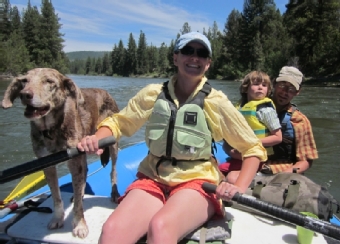
Jennifer Smith
jsmith[at]neoninc.org
Dr. Jennifer N. Smith received her doctorate in 2014, co-advised by Drs. Doug Emlen and Dean Pearson. Her primary interests lie in understanding the ecological and evolutionary processes that govern individual- and community-level changes following exotic species introduction.
Her dissertation research focused on native web-building spiders in the intermountain grasslands of western Montana after the introduction of spotted knapweed (Centaurea stoebe). After knapweed invasion, all native web spiders increase in abundance; however, one group (Dictyna spp.) fairs much better than others. She investigated the mechanisms underlying web spider community reassembly following invasion; plastic and evolved changes in web size following invasion; and, behavioral changes of Dictyna towards an egg parasitoid wasp.
Dr. Smith is currently Field Operations Manager for the National Ecological Observatory Network (NEON) based at the Prairie-Peninsula Domain facility in Manhattan, Kansas.
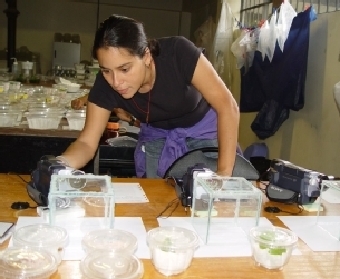
Alex Trillo
alextrillo[at]hotmail.com
Research Interests:
My general interests include ecology, behavior, development, and evolution. Currently, the research topics that most interest me can be seen as two sides of a coin: (1) how do different traits interact developmentally and functionally to influence fitness; and (2) how different selective pressures interact to affect the diversification and evolution of traits, and ultimately affect speciation?
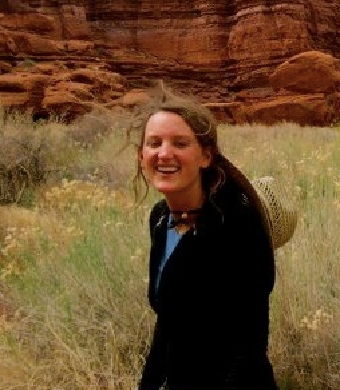
Mary Bruen
My involvement in the Emlen lab began in the fall of 2010. Initially, I worked with rhinoceros beetles, Trypoxylus dichotomus, where I was involved in embryo dissections and embryo staining for the distal-less (Dll) gene (a transcription factor that we believed may be involved in the outgrowth of horns at the embryonic stage). I also helped with beetle habitat maintenance, and limb measurements.In the spring of 2011, under the mentorship of Jennifer Smith and Dr. Emlen and with a grant awarded by MILES, I pursued an independent undergraduate research project regarding the effects of an invasive species, spotted knapweed, on a native Dictyna spider prey populations in western Montana. This led to another research project looking at the affect of Dictyna spider population explosions on the abundance of a parasitoid wasp, Catolaccus, that has been known to parasitize Dictyna spider egg sacs. Outside of my interests in evolutionary processes and invasive species, I am also quite fascinated by human physiology. Currently, I am working as an EMT-B for a private ambulance company, Missoula Emergency Services Inc.
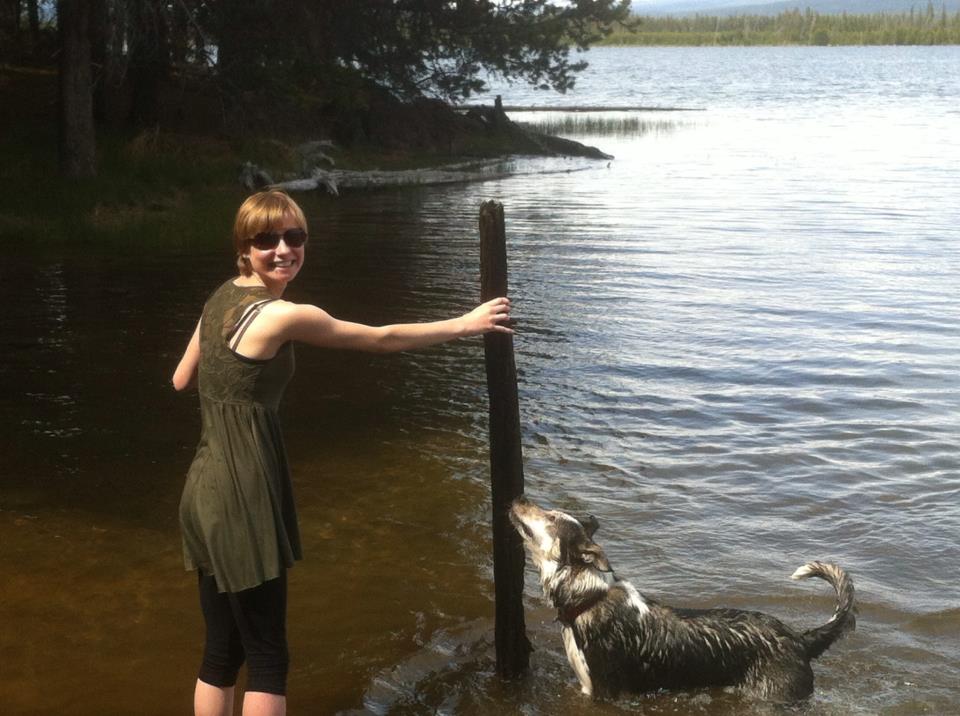
Nikita Cooley
Nikita began working in the Emlen lab in 2014. Her honors research project, in collaboration with Art Woods, examined the effects of heat and metabolic constraints on rhinoceros beetle larvae.
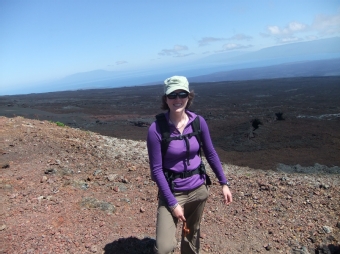
Jessica Corean
Jessica worked in the Emlen lab as an undergraduate researcher in 2009. She was involved in many projects including using antibodies to stain developing horns in rhinoceros beetle larvae to look at the expression of patterning genes. After graduation Jessica went on to attend medical school at The University of North Dakota School of Medicine and Health Sciences in the Medical Doctorate program. During her residency, Jessica plans to practice either in Family medicine or Internal Medicine.
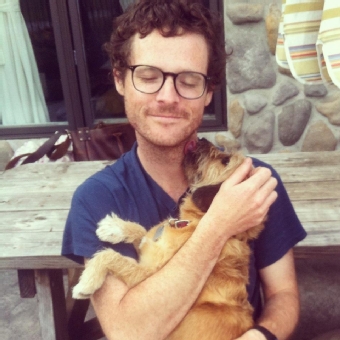
Ben Ewen-Campen
bewencampen[at]oeb.harvard.edu
My work in the Emlen lab focused on the developmental mechanisms that underlie horn dimorphism in beetles. I worked to help generate methods for visualizing gene expression in rhinoceros beetle horn primordia to understand how this weapon is built, and how his process differs between between individual beetles with differently sized horns. In addition, although the horn primordia does not morphologically form until late larval stages (many months after egg-laying in some species!), I also worked on very early embryos, just days after egg-laying, to understand how the horn primoridia is initially specifiedin the earliest stages of development.
After leaving the Emlen lab, Ben joined Dr. Cassandra Extavour's lab at Harvard University where he is studying the embryonic specification of germ cells in insects. In his spare time, Ben rants about his favorite scientific papers on the website Sick Papes.
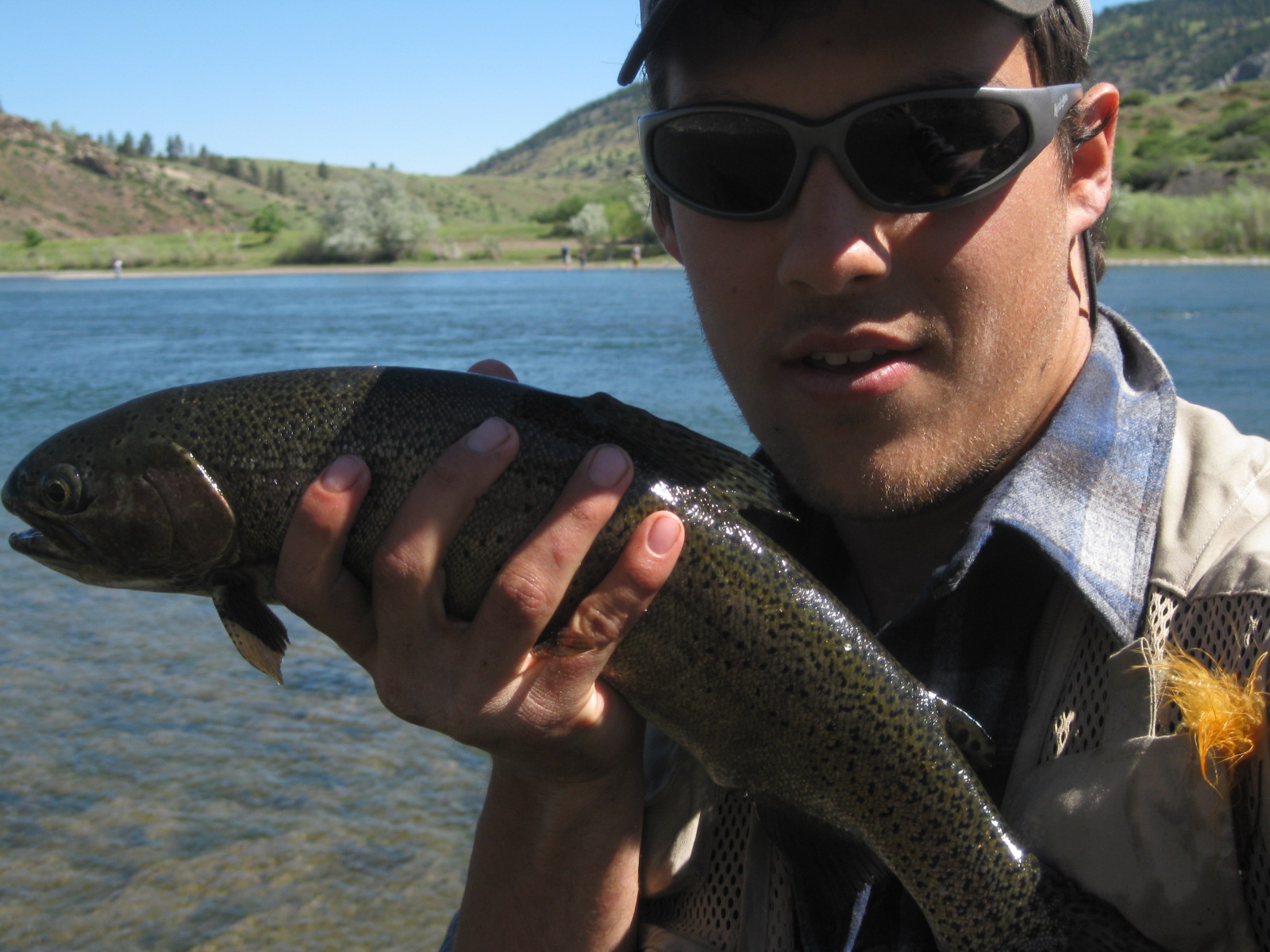
Dylan Gomes
Dylan joined the lab in 2013, and worked with PhD student Jema Rushe to help construct a phylogeny for the rhinoceros beetles (Subfamily: Dynastinae) by using next-generation sequencing. Dylan is passionate about biology and the natural world, and after graduating in May 2014 has taken his enthusiasm to the tropics, where he is getting valuable experience before embarking on his own graduate studies.
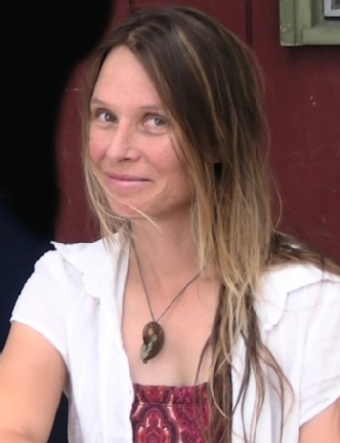
Olga Helmy
Olga Helmy caught the nature “bug” as a young girl growing up in Southern Illinois. Because she spent most of her free time in the Shawnee National Forest and surrounding hills, she developed an appreciation for wild places that bordered on going feral. She followed this appreciation to college where she studied zoology and then onto graduate school where she studied first insect behavior and later aquatic ecology. Olga’s non-biological interests stray towards creative pursuits in writing, travel and art. She has traveled and worked in Africa, Asia and in the Rocky Mountains of Western North America, where in spite of frequent forays abroad, she now feels at home. Olga lives in Vancouver, BC with her husband, Dr. Jedediah Brodie and their young son.
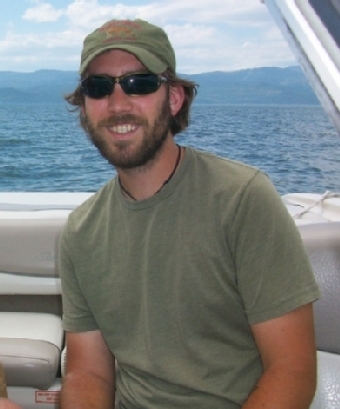
Chris Henderson
My research interests and background have focused broadly on the ecology of invasive species. As an undergraduate in 2010, I worked as an assistant in the Emlen lab with Jennifer Smith, a doctoral student investigating the effects of spotted knapweed (Centaurea stoebe) invasions on the behavior and evolution of spiders in the genus Dictyna. Working under the hypothesis that the invaded landscapes will facilitate larger web size and lead to a higher rate of prey capture, we tested the idea that the newly available substrate will have positive effects on fitness by releasing the spiders from nutritional constraints that existed in native landscapes, ultimately leading to the rapid evolution of larger body size in the genus. We sampled populations in the field, reared multiple generations in microcosm, and quantified morphological variation in the lab. My work in the Emlen lab and the courses I took as an undergraduate from Dr. Emlen, as well as my other research experiences in the world of ecology and evolutionary biology, have helped shape the questions I hope to pursue as a graduate student in the near future.
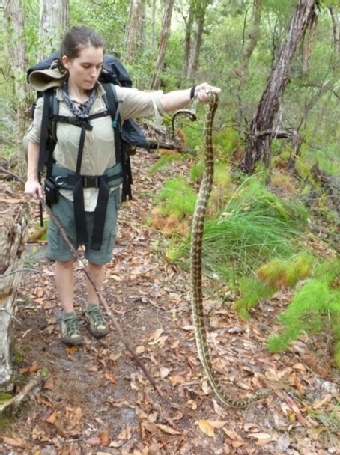
Emily Kerr
Emily joined the Emlen Lab during her senior year in 2012, working with Cerisse Allen on the squinting bush-brown butterfly Bicyclus anynana. Her project involved identifying and digitizing landmarks along their wings using the computer software ImageJ to understand the inherited basis of wing size and shape. In addition, she was simultaneously working in the McCutcheon lab on a NSF grant trying to figure out genomic libraries for fungi collected from pine beetles, and spending time in Art Woods’ lab testing the effects of varying atmospheric carbon dioxide levels on egg pH, viability and hatch rate of Manduca sexta. Fun fact: Emily has been enamored with reptiles since she was 10, and currently has 5 pythons in her house, along with a turtle and a rat.

Gregory Kohn
Broadly my interests include the role of sociability, behavioralflexibility and social learning in the development and evolution ofbehavior. As an undergraduate at the University of Montana I workedunder Alex Trillo looking at courtship behavior in Acromis sparsa beetles. I then received a master’s degree at Utrecht University underDr. Simon Reader investigating social learning strategies in guppies(Poecilia reticulate). I now am a PhD student at Indiana University working with Dr. Meredith West and Dr. Andrew King researching the role of social experience and consistent individual differences in the ontogeny of reproductive competence in a brood parasite, theBrown-headed Cowbird (Molothrus ater).
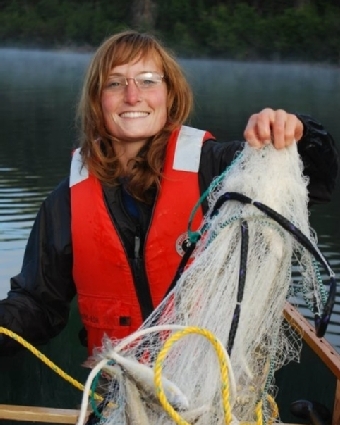
Tess Kreosfky
Tess joined the lab as an undergraduate and a volunteer in autumn of 2009. She assisted in collecting images of the Japanese rhinoceros beetle through a dissecting scope. The photos were used to measure sex differences in the physical morphology of the species. Following graduation, she became a field technician for Jennifer Smith. Tess assisted in the collection of data and specimens for Smith's research on the nesting behavior of Dictyna spiders. After leaving her generous mentor's at the Emlen lab, Tess continued to work as a field technician with various species across the country. Currently, she is pursuing a Doctorate in Physical Therapy.
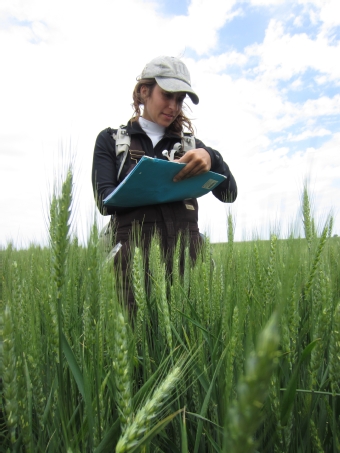
Jessica Laskowski
Broadly, my interests lie in how wildlife, landscapes, and organisms interact. I’m drawn to animal ecology and behavior, and the ways in which interactions shape individual and demographic-level phenomena. I plan to work at the interface of wildlife populations and human communities in an effort to bridge the gap between science and the general public. As an undergraduate I worked in the Emlen Lab on an ongoing research project exploring the genetic mechanisms that underlie horn development in rhinoceros beetles. My time in the Emlen Lab provided me with insight into the sphere of science and academia and helped me to focus my interests and move forward. I’m currently a master’s student at the University of Nebraska-Lincoln working with Dr. Joseph Fontaine researching the effects of perceived predation risk on prey behavior, physiology and reproductive investment.
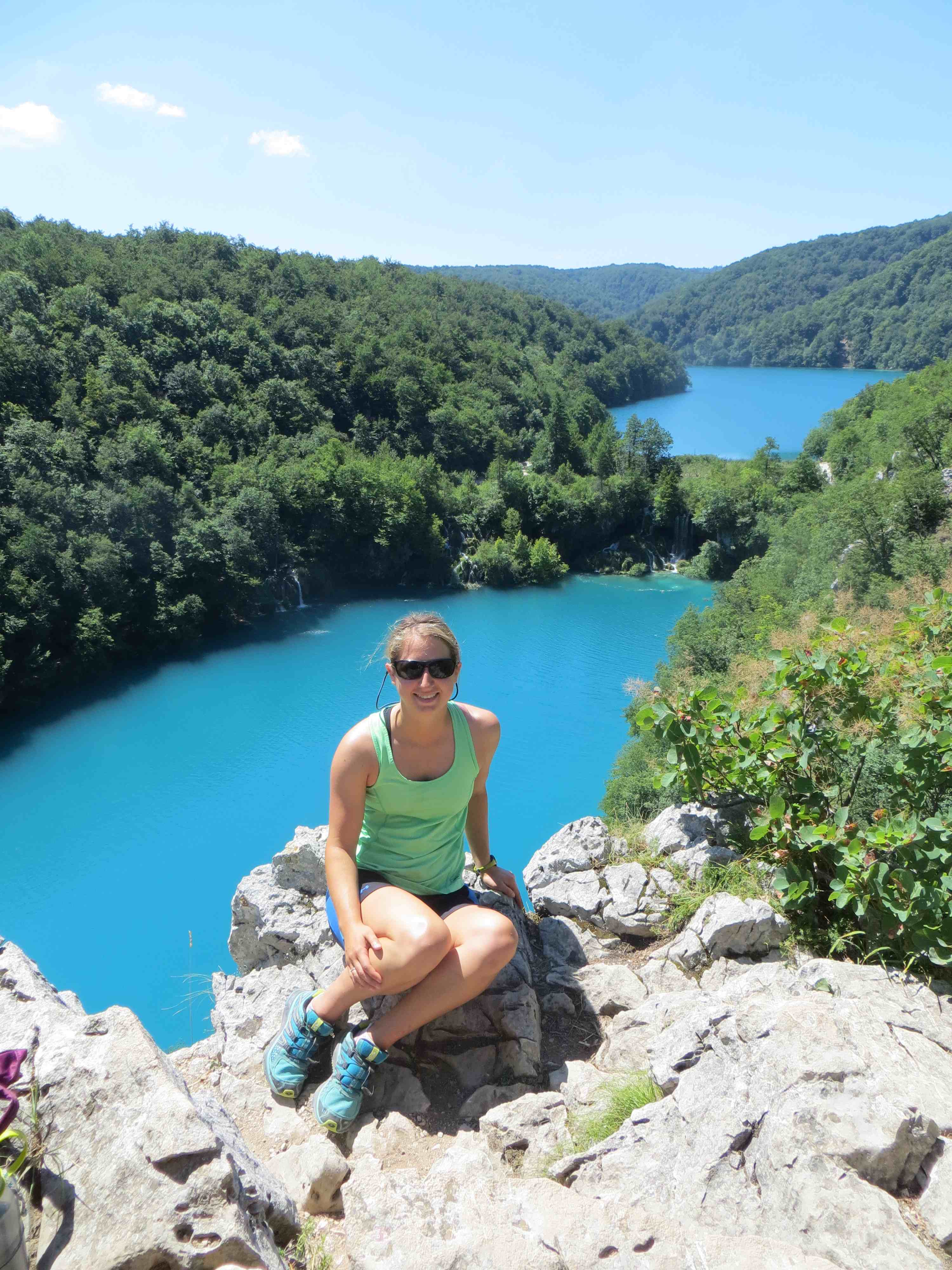
Kim Ledger
Kim is interested in all things biology. She worked in the Emlen Lab from 2013-2014. She assisted Erin McCullough on rhinoceros beetle horn allometry data analysis and Jema Rushe in the molecular lab. In May 2014 she received her BA in Ecology and Organismal Biology from UM. Kim is currently filling her time by working as a field technician and traveling before applying for graduate school in evolutionary ecology.
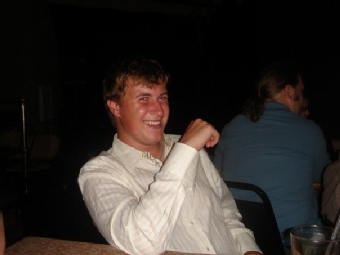
Kael Melanson
Kael was inspired to work in the Emlen Lab after taking a Behavior and Evolution course taught by Erin McCullough and Jennifer Smith. In 2011, he helped to set up a massive experiment simulating knapweed invasion in non-invaded grasslands, to measure the effects on Dictyna spider populations. He followed this by helping Erin with her work on the biomechanics of rhinoceros beetle horns by analyzing images of beetles to locate the center of mass of their horns. Kael says: Spending time in Doug Emlen’s lab has given me a great appreciation for the time and effort it takes to conduct scientific studies and has helped me greatly with my future goals in continuing my education in the scientific field.
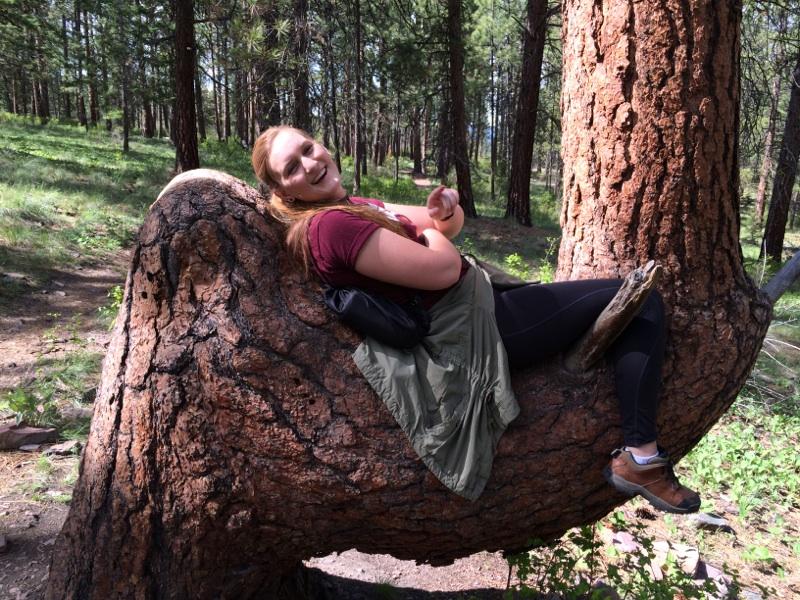
Stephanie Parker
Stephanie joined the lab in 2015. Her research, in collaboration with Cerisse Allen, focused on seasonal variation and sexual dimorphism of wing size and shape in the squinting bush-brown butterfly Bicyclus anynana .
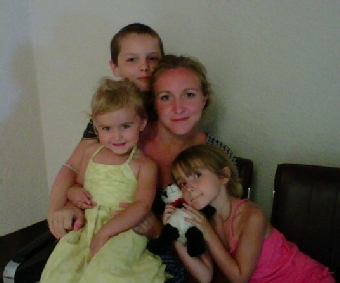
Marisha Richardson
Thebuglady16[at]yahoo.com
Marisha came to the Emlen lab with extensive experience in animal husbandry, gained from stints at the Orkin Insect Zoo at the Smithsonian Museum of Natural History, the Invertebrate Zoo at the National Zoo in Washington DC, four years with the Arizona Department of Agriculture, and studies in coleopteran taxonomy with Drs. Ian Watkinson and Tim Whittier at Arizona Western College in Yuma, AZ. During her time in the Emlen lab, she took charge of beetle husbandry, assisted with insect identification for the public and for entomology courses, and participated in numerous outreach activities.She is currently Chief Entomologist at The Strong Museum in Rochester, NY.
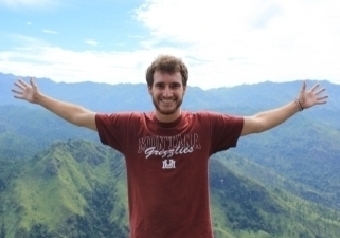
Bret Robinson
Bret Robinson was an undergraduate assistant lab member from 2009 to 2010. He aided in a dietary developmental husbandry experiment with the species of Japanese Rhinoceros Beetle, Trypoxylus dichotoma. He also contributed to developmental gene staining of the Japanese rhinoceros beetle larvae. He then left the lab and went to Trinidad and Tobago for tropical field research under PhD candidate Sarah Fitzpatrick of Colorado State University. He spent a year living and working on a hybrid evolution project with the guppy Poecilia reticulata. Also, while in Trinidad he worked with the Eco-Evolution Guppy Mark Recapture Project under Dr. David Reznik from the University of California at Riverside. This fall, he will be attending San Jose State University for his Masters working under Dr. Jeff Honda. He is beginning an internship with the Santa Clara County Mosquito and Vector Control Association of California.
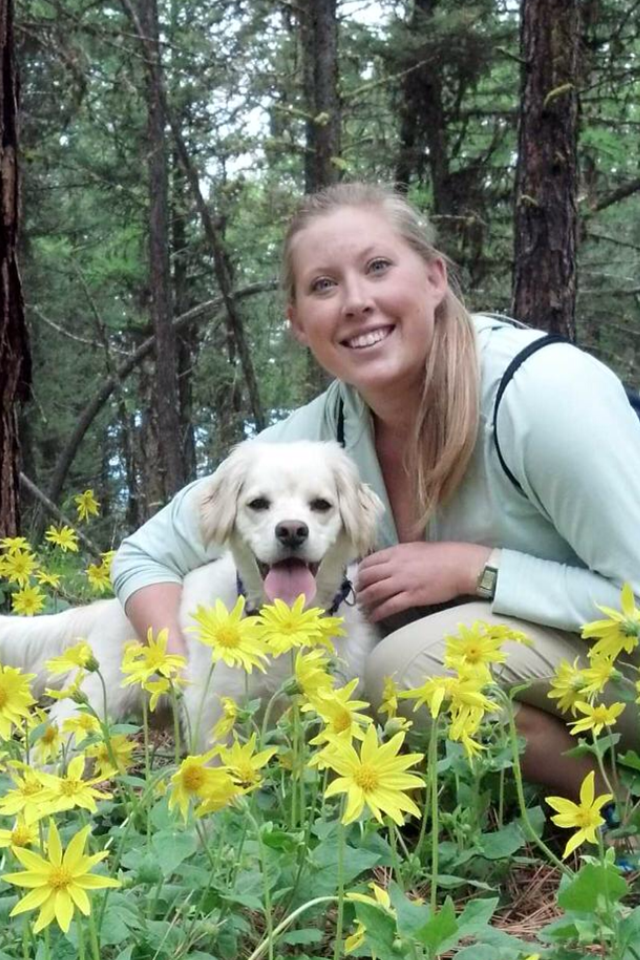
Sarah Solie
Sarah joined the lab in 2014 and worked on a variety of projects including conducting field work with Devin O’Brien on the evolution of massive hindlimb weapons in wild populations of frog-legged beetles, Sagra femorata. In 2016,Sarah moved to Duke University to pursue doctoral research in visual ecology with Sanke Johnsen.
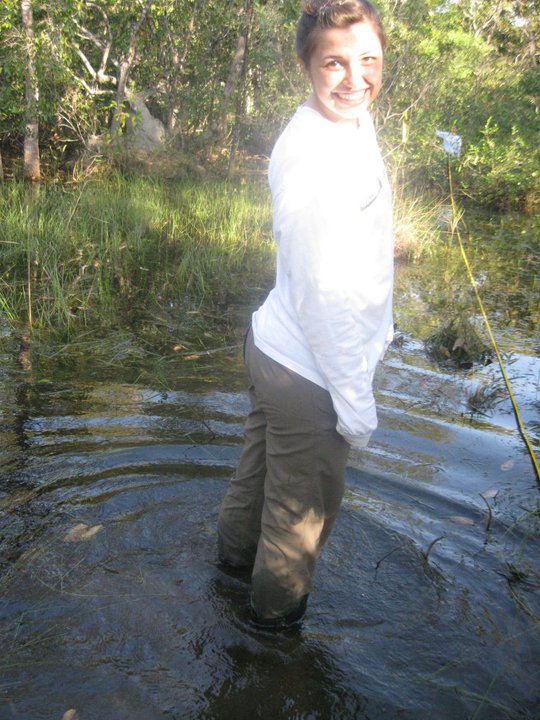
Melanie Sourbeer
Melanie joined the lab as a post-baccalaureate student in 2014, working with our lab population of rhinoceros beetles.

Demitra Suko
Demitra worked for the Emlen Lab in 2012-2013. She developed a project looking at insect vision in the beetle, Trypoxylus dichotomus. Demitra used the dissecting scope to search for sex differences in eye morphology by assessing eye size and facet (ommatidia) number. The next step of her project was to build chambers for the beetles in which she could conduct visual stimulus experiments. It is known that beetles can detect light and cannot see the color red, but Demitra’s project delved much deeper into a better understanding of the limits of Trypoxylus’ eyesight. She was awarded a 3000 dollar RUE stipend from the University of Montana Institute on Ecosystems. Demitra is currently working as a Mountain Lakes Intern for the Fish Wildlife and Parks Service, studying fish populations in alpine lakes.
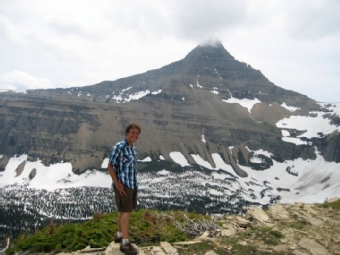
Paul Weingarden
Paul Weingarden participated in the Emlen Lab from winter 2011 until his undergraduate graduation in spring of 2012. For his first project in the lab, he performed morphometric analysis on the wings of Trypoxylus dichotomus. At the beginning of his final year of undergrad, he began a study on the microscopic topography of T. dichotomus horns. Using video footage collected in Taiwan from Erin McCullough, he quantified male fighting behavior to determine which areas of the horns were used more often than others. He then examined these horns with scanning electron microscopy to view the sensory structures and surface details at this scale. After graduation, Paul spent his summer as a field assistant for Lund University in Sweden studying the mating behavior of the damselfly Calopteryx splendens.
